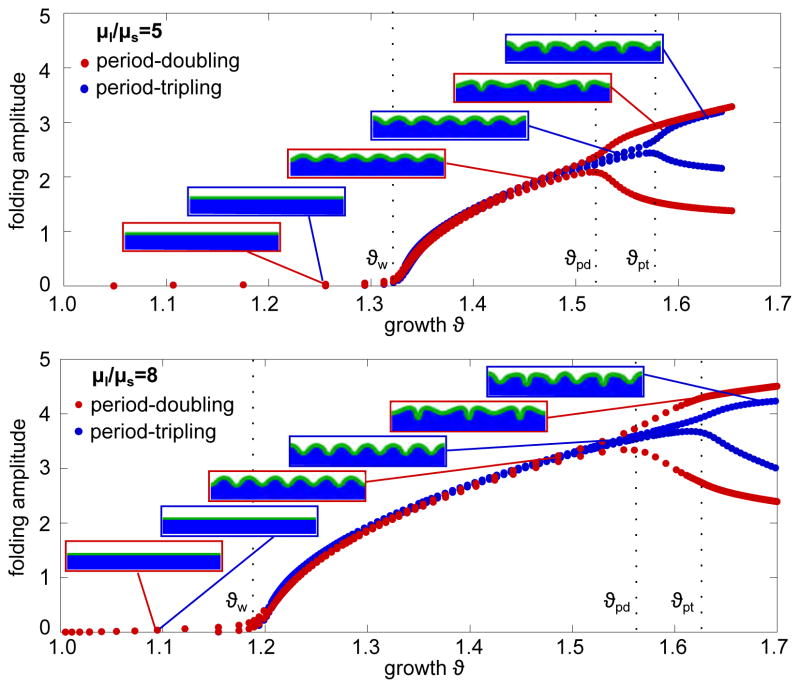Figure 7.
Pitchfork bifurcations of period-doubling and period-tripling for stiffness contrasts of μl/μs = 5 and μl/μs = 8. Initially, the growing layer is flat and the amplitudes are zero. At first instability point ϑw, all amplitudes begin to grow simultaneously. For the case of period-doubling (red curves), at the second instability point ϑpd, a pitchfork bifurcation occurs: every second amplitude grows and those in between decay. For the case of period-tripling (blue curves), ϑpd is passed without bifurcation. Further growth initiates period-tripling at the secondary bifurcation point ϑpt: every third amplitudes grows and those in between decay. The time between primary and secondary bifurcation increases with increasing stiffness contrast μl/μs.

